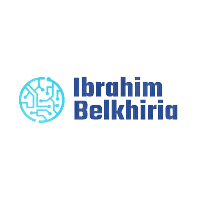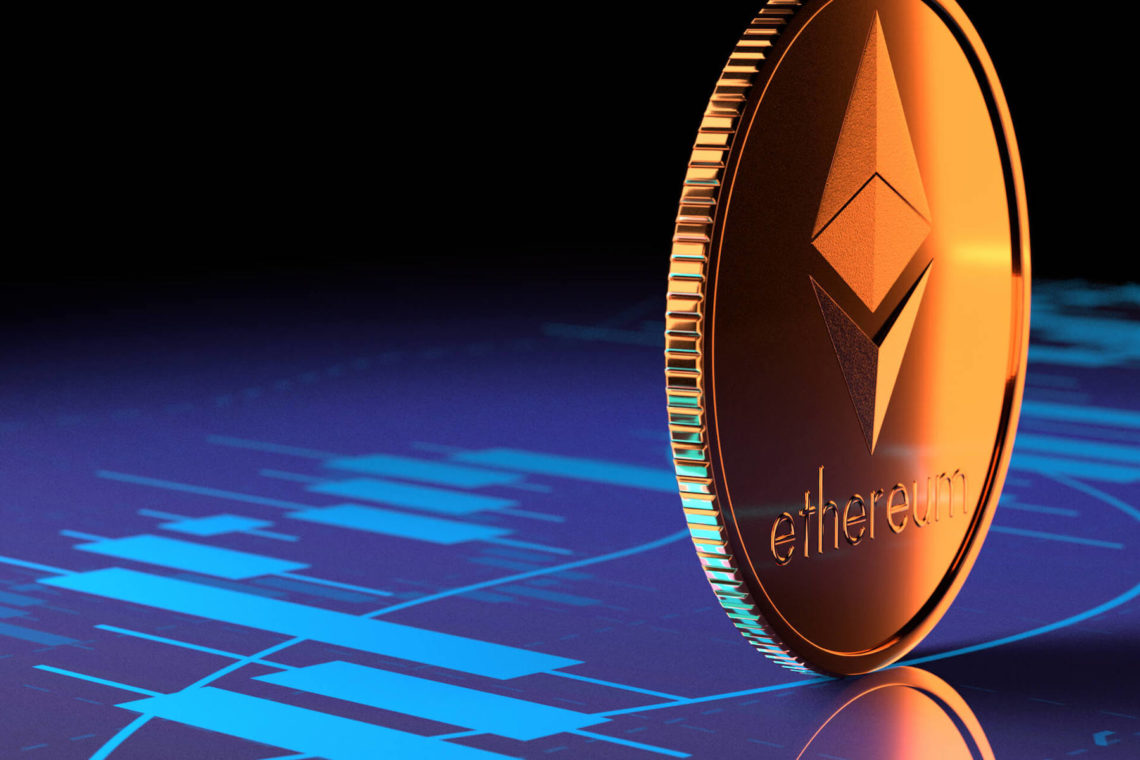Introduction
Definition of Decentralized Applications (DApps)
Decentralized Applications (DApps) are a new breed of applications that leverage blockchain technology to enable peer-to-peer interactions without the need for intermediaries. These applications are built on decentralized networks, where data is stored and validated by a distributed network of computers, ensuring transparency, security, and immutability. DApps are designed to be open-source, meaning that anyone can access, use, and contribute to their development. They offer a range of benefits, including increased privacy, censorship resistance, and the ability to create and manage digital assets. As the popularity of blockchain technology continues to grow, so does the potential for DApps to revolutionize various industries, such as finance, supply chain management, and social networking.
Advantages of DApps
Decentralized Applications (DApps) offer several advantages over traditional centralized applications. One of the key advantages is that DApps are not controlled by a single entity or organization, making them resistant to censorship and tampering. Additionally, DApps run on blockchain technology, which provides transparency, immutability, and security. This decentralized nature also eliminates the need for intermediaries, reducing costs and increasing efficiency. Furthermore, DApps enable peer-to-peer transactions, allowing users to interact directly without the need for intermediaries. Overall, the advantages of DApps make them a promising solution for various industries, including finance, supply chain, and governance.
Examples of DApps
Examples of DApps are becoming increasingly prevalent in various industries. One such example is the gaming industry, where DApps are revolutionizing the way games are developed and played. These decentralized applications allow gamers to trade in-game assets, participate in virtual economies, and even earn real-world rewards. Another example is the finance industry, where DApps are transforming traditional banking systems. With decentralized finance (DeFi) DApps, users can access financial services such as lending, borrowing, and trading without the need for intermediaries. Additionally, DApps are being utilized in supply chain management, healthcare, and social media, among other sectors. The possibilities for DApps are endless, and their potential to disrupt and innovate various industries is truly remarkable.
How DApps Work

Blockchain Technology
Blockchain technology is the underlying technology behind decentralized applications (DApps). It is a distributed ledger that securely records and verifies transactions across multiple computers. Unlike traditional centralized systems, blockchain operates on a peer-to-peer network, where each participant has a copy of the entire blockchain. This ensures transparency, immutability, and security of data. By eliminating the need for intermediaries, blockchain technology enables trustless interactions and reduces the risk of fraud. With its potential to revolutionize various industries, blockchain is paving the way for the future of decentralized applications.
Smart Contracts
Smart contracts are self-executing contracts with the terms of the agreement directly written into lines of code. These contracts automatically execute when the predetermined conditions are met, without the need for intermediaries. They are a key component of decentralized applications (DApps) on the blockchain, as they enable trustless and transparent interactions between parties. Smart contracts have the potential to revolutionize various industries, such as finance, supply chain management, and real estate, by eliminating the need for traditional intermediaries and reducing costs. With the increasing adoption of blockchain technology, the use of smart contracts is expected to grow, paving the way for a more efficient and secure digital economy.
Decentralized Consensus Mechanisms
Decentralized consensus mechanisms play a crucial role in ensuring the security and integrity of decentralized applications (DApps) on the blockchain. These mechanisms enable multiple participants in the network to reach an agreement on the state of the system without relying on a central authority. One popular consensus mechanism used in blockchain technology is Proof of Work (PoW), where participants compete to solve complex mathematical puzzles to validate transactions and add them to the blockchain. Another commonly used mechanism is Proof of Stake (PoS), where participants can validate transactions based on the number of coins they hold. These consensus mechanisms not only provide security but also contribute to the decentralization and trustlessness of DApps, making them resistant to censorship and single points of failure.
Benefits of DApps

Transparency and Trust
Transparency and trust are two key pillars of decentralized applications (DApps) on the blockchain. Unlike traditional centralized systems, DApps operate on a distributed network where every transaction and data update is recorded on a public ledger, known as the blockchain. This transparency ensures that all participants in the network have access to the same information, reducing the risk of fraud or manipulation. Additionally, the use of smart contracts in DApps enables automated and verifiable transactions, further enhancing trust between parties. With transparency and trust as foundational principles, DApps have the potential to revolutionize industries by providing secure and reliable solutions for various applications.
Elimination of Intermediaries
Decentralized applications (DApps) on blockchain have revolutionized various industries by eliminating intermediaries. In traditional systems, intermediaries such as banks, payment processors, or government agencies play a crucial role in facilitating transactions and enforcing trust. However, DApps leverage the decentralized nature of blockchain technology to remove the need for intermediaries, resulting in increased efficiency, transparency, and security. By eliminating intermediaries, DApps empower individuals and businesses to engage in peer-to-peer transactions directly, reducing costs and time delays. Additionally, the elimination of intermediaries reduces the risk of censorship and manipulation, making DApps a more democratic and inclusive solution. Overall, the elimination of intermediaries in DApps has transformed the way transactions are conducted, paving the way for a more decentralized and efficient future.
Enhanced Security
Enhanced security is one of the key advantages of decentralized applications (DApps) on the blockchain. Unlike traditional centralized systems, where data is stored on a single server, DApps distribute data across multiple nodes in a network. This decentralized architecture makes it extremely difficult for hackers to compromise the security of the application. Additionally, the use of cryptographic algorithms and smart contracts further enhances the security of DApps, ensuring that transactions and data exchanges are tamper-proof and transparent. With enhanced security measures, DApps provide users with a higher level of trust and confidence in their interactions and transactions on the blockchain.
Challenges of DApps

Scalability
Scalability is a crucial aspect when it comes to decentralized applications (DApps) on blockchain. As the popularity of DApps continues to grow, it is important to address the scalability challenges that arise. The ability of a DApp to handle a large number of users and transactions without compromising performance is essential for its success. Various approaches such as sharding, layer 2 solutions, and off-chain scaling techniques are being explored to improve scalability in blockchain-based applications. By implementing these solutions, DApps can achieve higher throughput, lower transaction costs, and enhanced user experience, paving the way for widespread adoption of decentralized applications.
User Experience
User experience is a crucial aspect of decentralized applications (DApps) on the blockchain. As DApps aim to provide a seamless and intuitive user interface, they need to prioritize user experience to attract and retain users. From the onboarding process to the overall functionality of the application, every interaction should be designed with the user in mind. This includes ensuring smooth navigation, clear instructions, and responsive design. By focusing on user experience, DApps can enhance user engagement and adoption, ultimately driving the widespread use of blockchain technology.
Regulatory Compliance
Regulatory compliance is a critical aspect of developing and operating decentralized applications (DApps) on the blockchain. As the adoption of blockchain technology continues to grow, governments and regulatory bodies around the world are paying closer attention to the potential risks and challenges associated with DApps. To ensure the legitimacy and security of DApps, developers must navigate a complex landscape of regulations and compliance requirements. This includes adhering to anti-money laundering (AML) and know your customer (KYC) regulations, as well as data protection and privacy laws. By prioritizing regulatory compliance, DApp developers can build trust with users and stakeholders, and contribute to the long-term success and sustainability of the blockchain ecosystem.
Use Cases of DApps

Finance and Banking
Decentralized applications (DApps) have the potential to revolutionize the finance and banking industry. By leveraging blockchain technology, DApps can provide secure and transparent financial services without the need for intermediaries. This eliminates the need for traditional banks and financial institutions, reducing costs and improving efficiency. Additionally, DApps enable peer-to-peer transactions, allowing individuals to directly interact and conduct financial activities without relying on a centralized authority. With the increasing adoption of DApps, we can expect to see a shift towards a more decentralized and inclusive financial system.
Supply Chain Management
Supply Chain Management is one of the key areas where decentralized applications (DApps) on blockchain can revolutionize the way businesses operate. By leveraging the transparency and immutability of blockchain technology, DApps can provide a secure and efficient way to track and trace products throughout the entire supply chain. This can help eliminate counterfeiting, ensure product authenticity, and improve overall supply chain visibility. Additionally, DApps can enable real-time monitoring of inventory levels, automate payment and settlement processes, and facilitate seamless collaboration between different stakeholders in the supply chain. With decentralized applications, supply chain management can become more transparent, trustworthy, and resilient, paving the way for a new era of efficiency and accountability.
Gaming and Entertainment
Gaming and entertainment have emerged as one of the most promising use cases for decentralized applications (DApps) on the blockchain. With the ability to provide transparent and secure gameplay, DApps are revolutionizing the gaming industry. Players can now enjoy ownership of in-game assets, trade them with other players, and even earn rewards for their achievements. Additionally, DApps are enabling new forms of entertainment, such as virtual reality experiences and interactive storytelling, that were not possible before. As blockchain technology continues to evolve, the gaming and entertainment sector is poised for further growth and innovation.
Future of DApps

Integration with Internet of Things (IoT)
Integration with Internet of Things (IoT) is a crucial aspect of exploring decentralized applications (DApps) on the blockchain. The combination of DApps and IoT opens up a plethora of opportunities for innovation and automation. By integrating DApps with IoT devices, we can create a seamless and secure environment where devices can interact with each other and execute transactions autonomously. This integration enables real-time data sharing, improved transparency, and increased efficiency in various industries such as supply chain management, healthcare, energy, and more. With the ability to connect and communicate with IoT devices, DApps can revolutionize the way we interact with technology and reshape the future of decentralized systems.
Mass Adoption
Mass adoption of decentralized applications (DApps) on the blockchain is crucial for the growth and success of this emerging technology. As more individuals and businesses recognize the benefits and potential of DApps, the demand for user-friendly and scalable solutions will increase. Achieving mass adoption requires addressing key challenges such as improving user experience, enhancing security measures, and overcoming scalability issues. Additionally, educating the public about the advantages and possibilities of DApps is essential to encourage widespread adoption. With the right infrastructure and support, DApps have the potential to revolutionize various industries and empower individuals by providing decentralized, transparent, and efficient solutions.
Interoperability between Blockchains
Interoperability between blockchains is a crucial aspect in the world of decentralized applications (DApps) on blockchain. With the growing popularity of DApps, it has become essential for different blockchains to communicate and interact with each other seamlessly. Interoperability allows users to transfer assets and data across multiple blockchains, enabling them to access a wider range of services and functionalities. It also promotes collaboration and innovation by creating a network of interconnected blockchains, where developers can leverage the strengths of different platforms and build more advanced and scalable DApps. As the blockchain ecosystem continues to evolve, achieving interoperability between blockchains will play a key role in realizing the full potential of decentralized applications.

